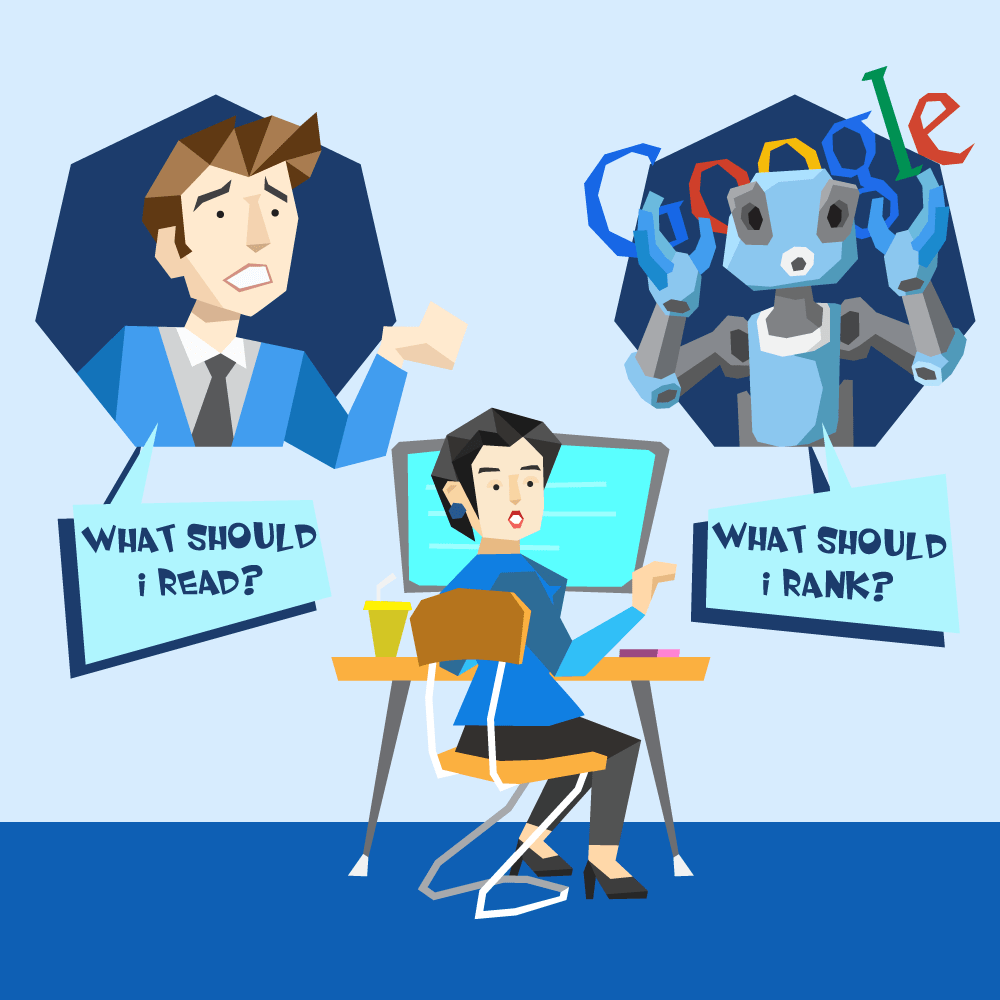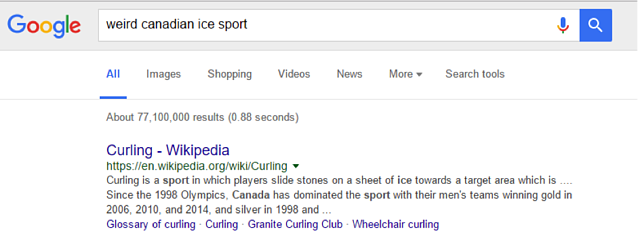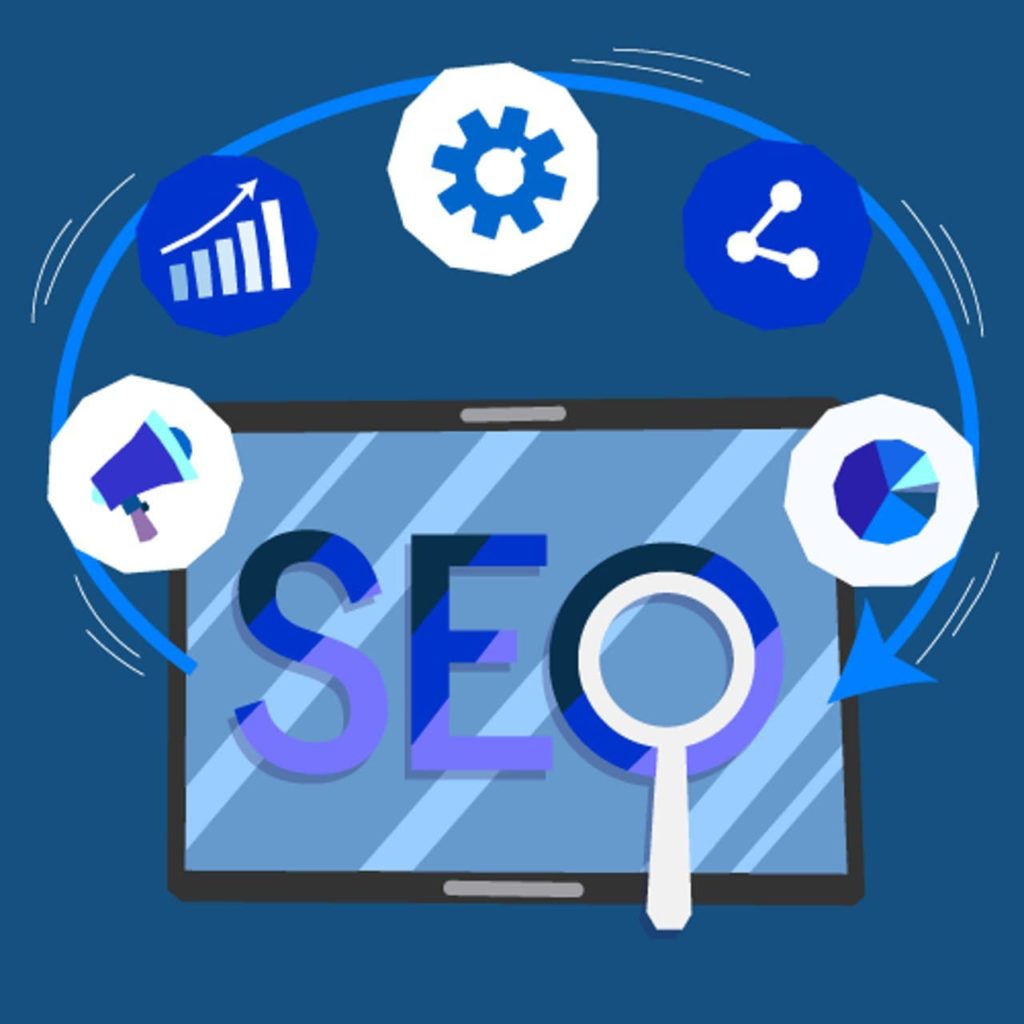On-Page SEO for the Human

If you have been reading up on SEO, especially articles that were published in 2015-2016, then you have probably come across the idea of ‘write for the human and not the machine.’ In many ways, this actually sets up a false dilemma in people’s minds.
This concept originates from the early days of search engines and some intermittent periods when the algorithms controlling rankings were primarily driven by automated, seemingly mechanical processes.
The skill of SEO and SEO copy writing was in understanding how the machines and algorithms were going to interpret something, and then finding the balance of making their text legible to a human being.
This led to a ‘machine-first’ approach for web pages and content creation, with human readers coming in second. After all, if a page would never be ranked and discovered by humans, what was the point of initially writing it for them?
What we see now, however, is a world in which the technology determining rankings has grown and has learned to better distinguish which content will be useful and enjoyed by the humans that they serve.
Ways that SEOs Used to Try and Fool the Machine
Within the toolbox of many SEO’s in the past there was some very specific lists of ways that they could try and make their content more appealing to the search bots, quite often at the expense of the humans trying to read it.
Keyword Stuffing on Every Page
Keyword stuffing involved including the exact keyword as frequently as possible, sometimes with amusing results for any human reader. For example, if the primary goal was to rank for “pizza restaurant Atlanta” then a basic paragraph may have been written as so:
“The best pizza restaurant Atlanta has to offer is the pizza restaurant Atlanta residents will find when they wander downtown. If you are looking for a pizza restaurant in Atlanta then you will find that this Atlanta pizza restaurant will satisfy all of your desires.“
This style of writing worked great for the machines as they could really tell exactly what the article was for.
The metric that SEO’s were chasing in this scenario was Keyword Density, with the ultimate goal of having as high a density as possible while still making the page flow well enough that a reader didn’t just abandon it at sight.
Keyword Stuffing the Alt Text of Images
The alt text of an image is a line of text that you generally won’t see providing the web page has loaded correctly. The original purpose of the text is to make sure that if the image didn’t load then a slab of text would show up that explained what the image was supposed to be. Alt text is also very important for people who are visually impaired as their screen reader will read the alt text of any image to them so that they too can have the context of what the image was supposed to show.
Generally when you hover over an image on a website the alt text also shows up in a little text bubble.
Alt text is also used by the Search Engine crawlers to add additional clarity to the index as to what content is on the page. As the bot could not understand what the image actually was then it would read the alt text so it could also understand what the image was supposed to be.
Having read the previous area on keyword stuffing, you can probably imagine just what comes next. An SEO trick used to be filling the alt text up with every single keyword variation that they could possibly think of.
Referring to our previous example, we would end up with a picture of a pizza with the alt text: ‘alt text = pizza restaurant Atlanta, Atlanta pizza restaurant, pizza restaurants Atlanta, Atlanta pizza restaurants, pizza bar Atlanta, Atlanta pizza bar…’
And on and on, depending on how much time they had on their hands.
Many SEO’s felt that since the human users rarely saw the alt text component that this was the best possible time that they could REALLY stuff the keywords in there.
Invisible Text so Pages Don’t Look Weird
Previously, the primary goal of an SEO was to increase their keyword density, while not making a mangled mess of the page that the average reader found disgusting, which ultimately made the idea of making invisible text all too alluring.
So if the website had a white background, then the SEO would use the exact same white color for your text. This would make it possible to use keywords thousands and thousands of times without having to worry about what it actually looked like to the human readers that came to the website pages.
The text size could even be set so small that it didn’t take up much space on the page at all, but the machine could read it just fine as it was pulling it directly from the HTML and not the rendered page.
What a golden era indeed.
The Machines Have Become Adept at Understanding what Humans Want
Not only are the machines now better at understanding what a human is actually looking for, they also have a much better idea of when someone is trying to game the system and manipulate the responses. They can even tell whether website pages are being presented to a human and a bot in a very different forms from one another.
Panda Algorithm Update
The Google Panda update was brought in by Google as a method to remove the rankings of sites that were ‘thin’ or very low quality in content. As a search filter it directly affected the rankings of approximately 12% of all search results on the web.
Those that were trying to game the system found their sites suddenly unable to rank, while webmasters who were committed to writing quality content, aimed at a human audience, tended to see positive effects of the Panda algorithm in the form of an increase in the organic traffic coming to their website.
Hummingbird Algorithm Update
The Hummingbird update removed quite a lot of the need that an SEO would have in using the exact correct keyword repeatedly. The update was designed to take into account the meaning behind a search term and not simply the keywords that were used.
For anyone that has never studied computer science this may not seem impressive in the slightest. For anyone who understands the difficulty with which a computer based technology could possibly interpret something as varied as a human search query, then you will understand that this is an impressive update.
Rather than simply returning a page that matches the primary keywords, the Hummingbird update means that the pages appearing in a SERP will now be more related to the query and not confined to the exact keyword match.
It is this type of update that means when I type in “weird Canadian ice sport” that I am met with pages on Curling and not pages that specifically use the words ‘weird Canadian ice sport’.

RankBrain Algorithm Update
On the October 26th, 2015 Google formally announced that they were using a form of artificial intelligence in the rankings of certain key word queries.
In short, what RankBrain does is allow the core algorithm to respond better to queries that have never been searched before (which is a lot more queries than you may have thought. Approximately 450 million searches a day have never been searched before).
This sophisticated machine learning tool allows the algorithm to take much more accurate ‘guesses’ as to what users are actually looking for and then learning from the way that people interact with the results.
Suffice to say that when Google starts plugging in AI to their algorithm, we are moving well beyond the era in which a human SEO is going to be able to fool it.
We Must Now Live in Both Worlds
Many people will (almost correctly) assert that as long as you are writing for humans, everything will turn out okay. “Content is King and you shouldn’t even be thinking about the Search Engine!” While good in theory, this statement still significantly misses the mark.
There is much more to on-page SEO than simply trying to chuck the correct keywords in there and make the ultimate title tags. The answer lies even further than simply writing some great content.
Today, on-page SEO means that we need to write for the human as well as the machine. It means that we need to create useful content that educates and uses research as well as structure, to provide keyword rich, contextual depth.
After all if SEO was simply a matter of great content, as many people claim, then there would be no SEO’s left in the world, just journalists and designers.









